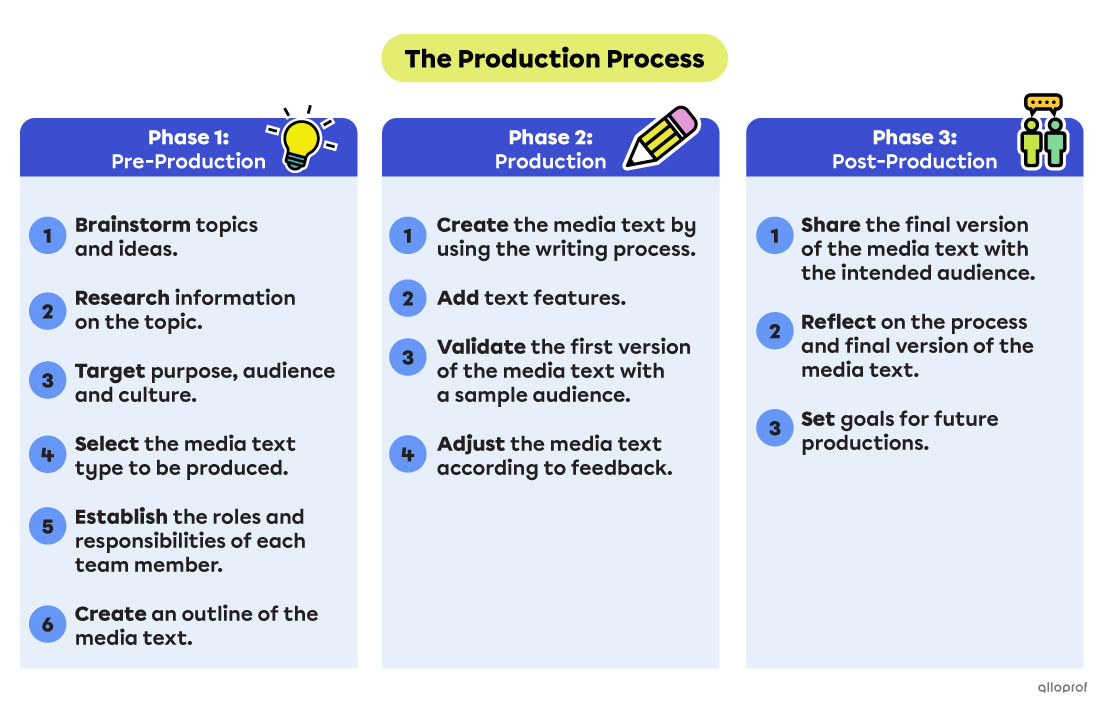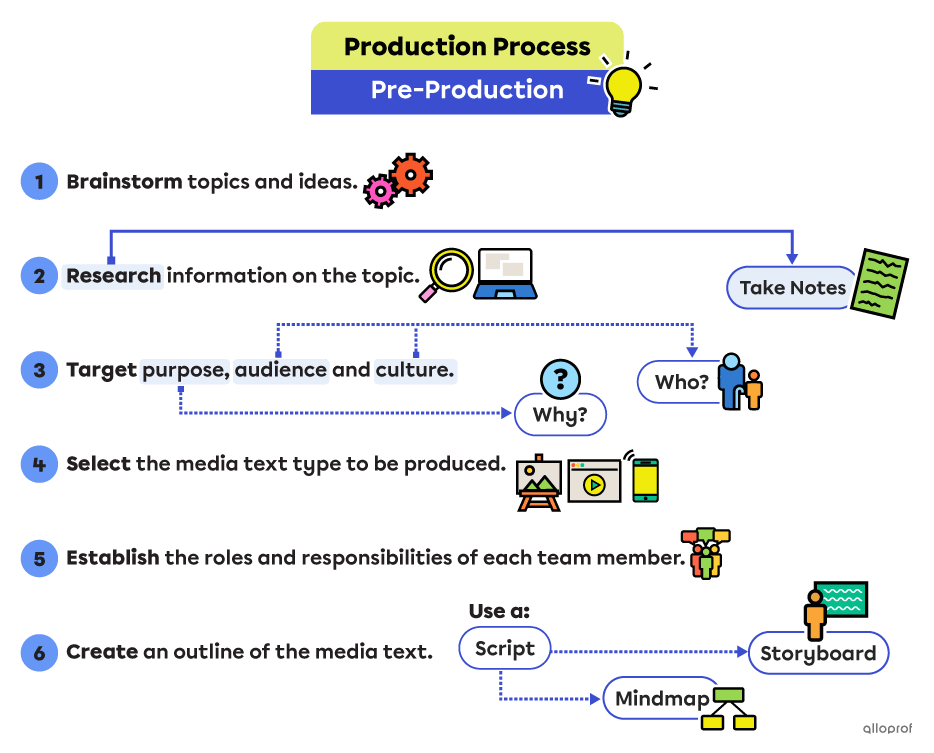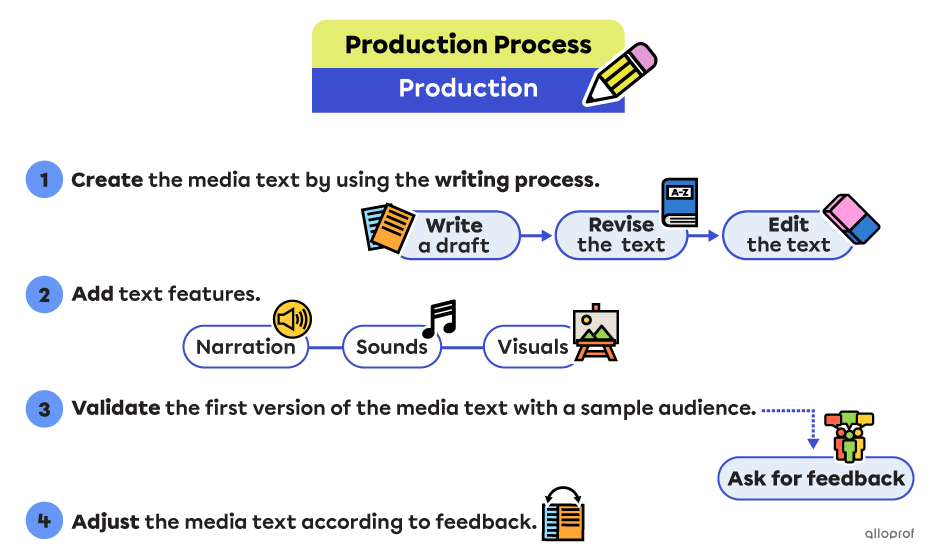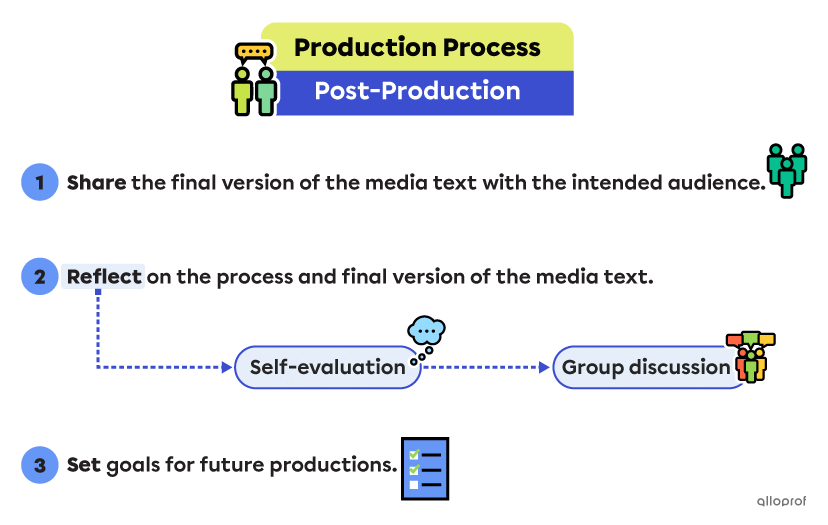The production process contains all the phases a person or a team goes through to create media texts.
Media texts are any form of spoken, written or visual communications produced to be presented to an audience, such as posters, videos, multimedia presentations and web pages.
The production process relies on cooperation, reflection and discussion that involve students and their teacher.
The production process involves three phases:

The production process can be adapted. Teachers and/or students can use and apply the phases/steps that work best for their needs.
In this phase, plan the media text by going through the following steps:
-
Brainstorm topic and ideas.
-
Research information on the topic.
-
Target purpose, audience and culture.
Brainstorming implies writing down and/or discussing everything that comes to mind about the topic, the prompts or guiding questions at hand.
To note down ideas, use images, keywords, or short sentences.
Use the internet, books, newspapers or any resources available to learn more about the topic.
Don’t forget to take notes.
According to guidelines, define the purpose of this project. What is the team’s intention and who will they be presenting to?
Identifying the purpose, the audience and the culture will influence the tone and style of the language.
-
Select the media text type to be produced.
-
Establish the roles and responsibilities of each team member.
-
Create an outline of the media text.
According to guidelines, decide which media text type the team will use.
Take time to research and plan the visuals and techniques the team wants to use.
Discuss collaboration ground rules and expectations with the team members.
Separate the workload and plan moments to work on the project together.
Make sure every team member knows and notes down the deadline (the date by which the media text needs to be completed and submitted).
Plan the content of the media text by using an organizing tool such as a storyboard, a script or a mindmap.
Plan the visuals and other appropriate text features as well.

During this phase, produce the media text by following these steps:
-
Write the media text using the writing process.
-
Add text features.
Start by writing a draft. Revise the text by using resources. Make adjustments to the text.
Complete the preliminary version of the project by adding narration, visuals and/or sound effects.
-
Validate the first version of the media text with a sample audience.
-
Adjust the media text according to feedback.
Practise the presentation or show the work to classmates. Ask them for feedback.
Review and reorganize the media text according to the comments received from a sample audience.

During this phase, present the media text and reflect on the process by following these steps:
-
Share the final version of the media text with the intended audience.
-
Reflect on the process and final version of the media text.
-
Set goals for future media texts.
According to guidelines, present or share the final version of the project with the intended audience.
Through self-evaluation rubrics and/or group discussions, think about how the production process went:
-
Which strategies and techniques worked?
-
What didn’t work?
-
How was the collaboration between the members of the team?
Think about ways to improve future productions:
-
Which strategies and techniques could be tried next?
-
How can collaboration be improved?
